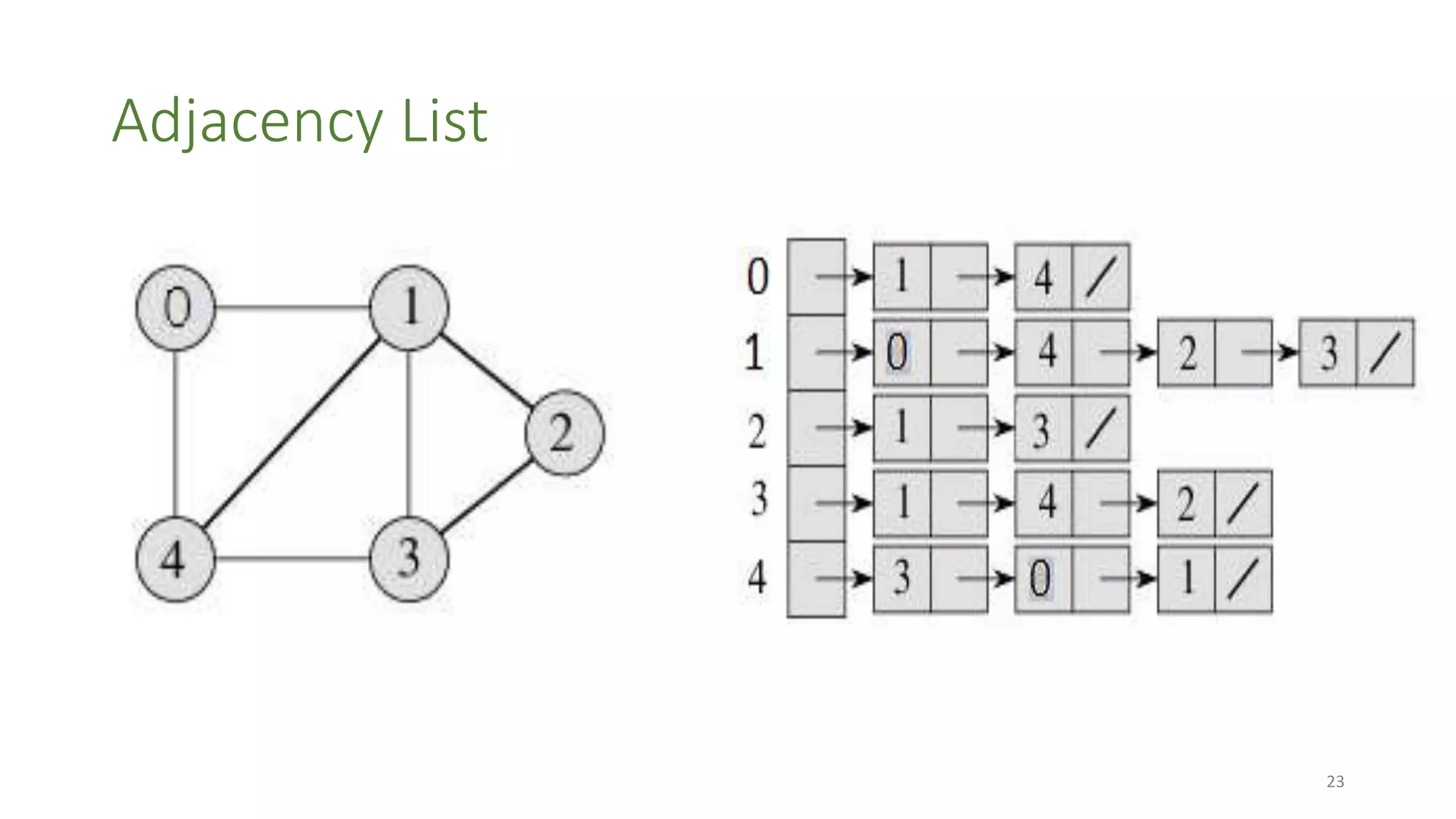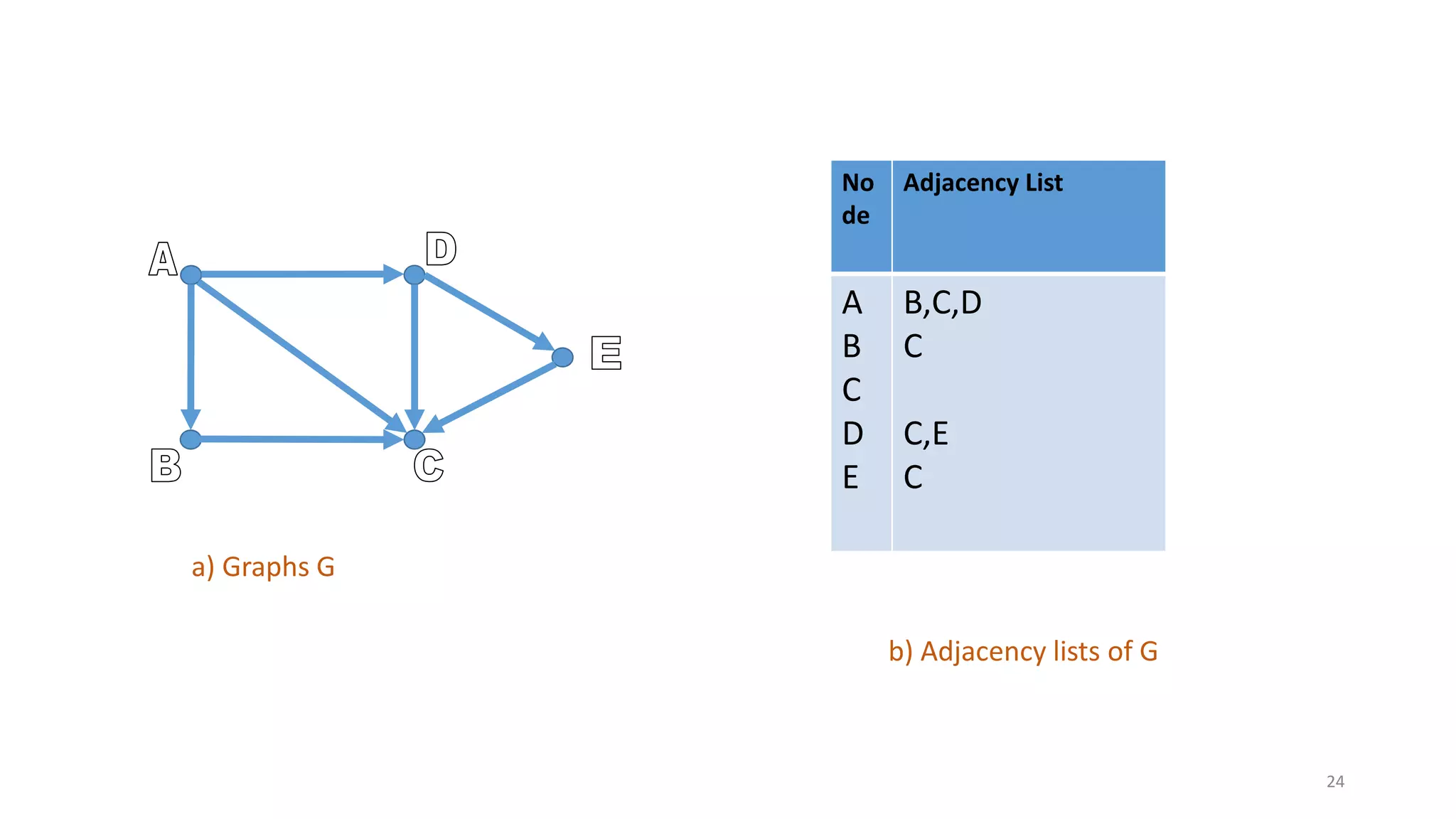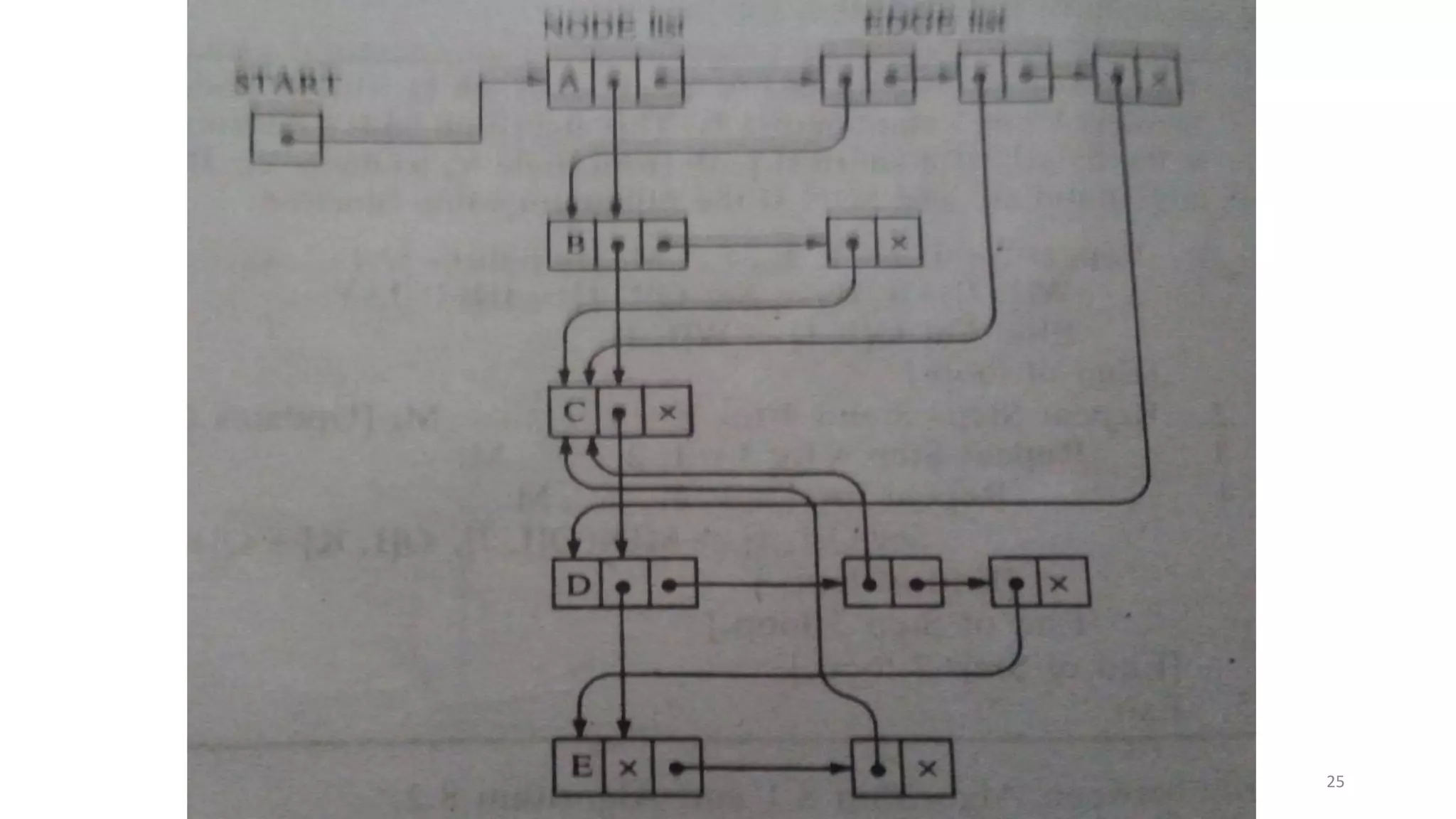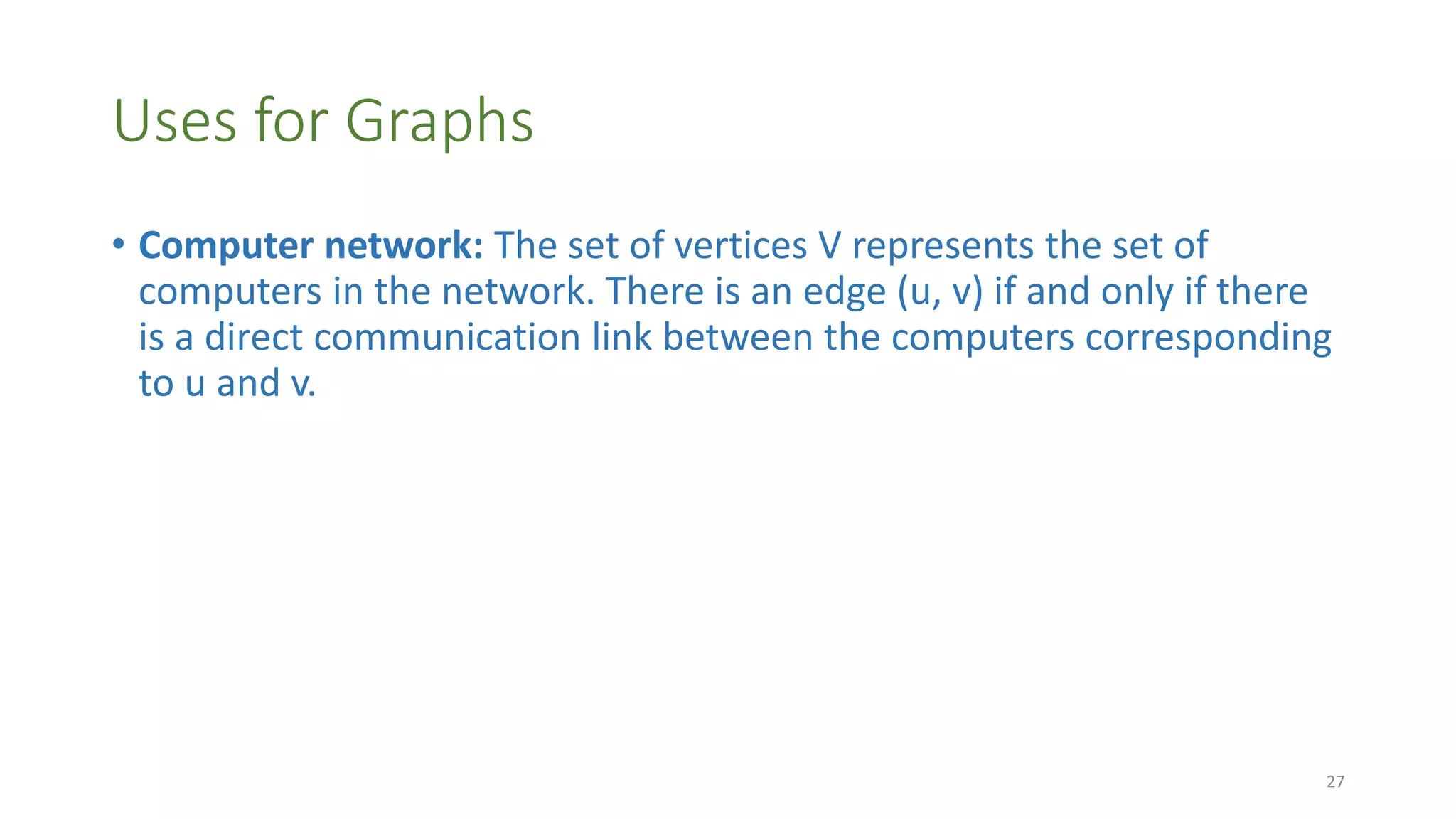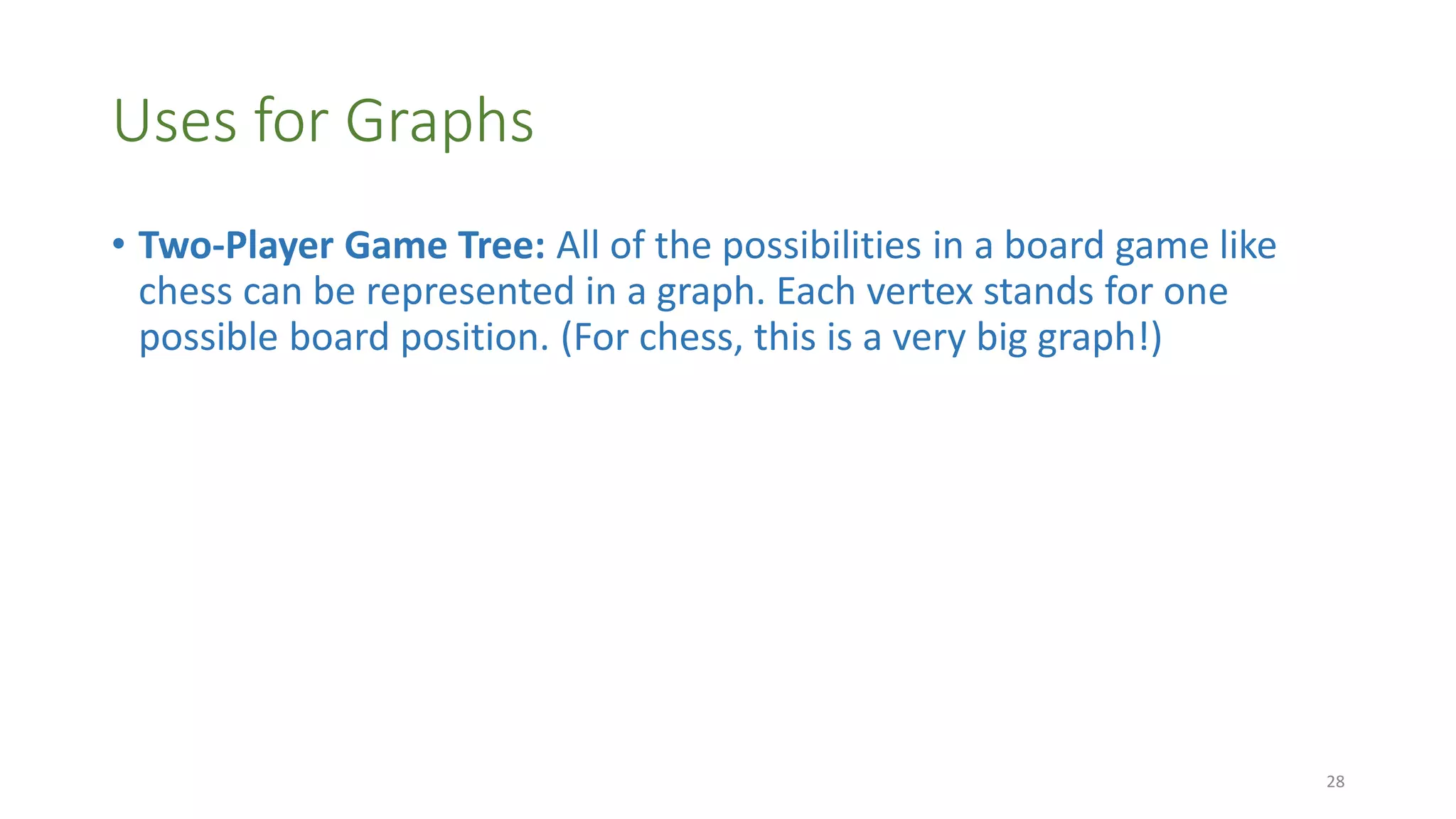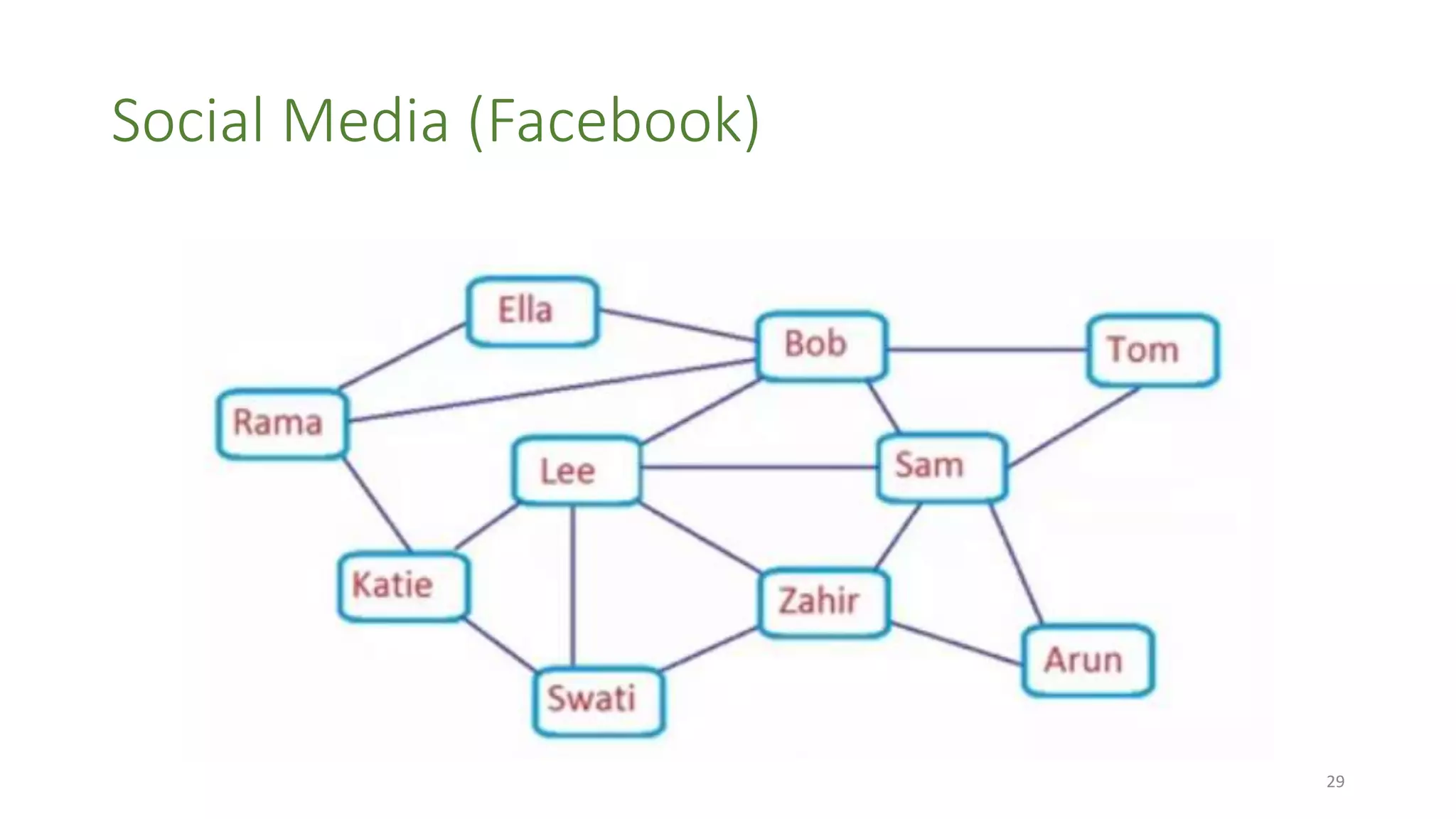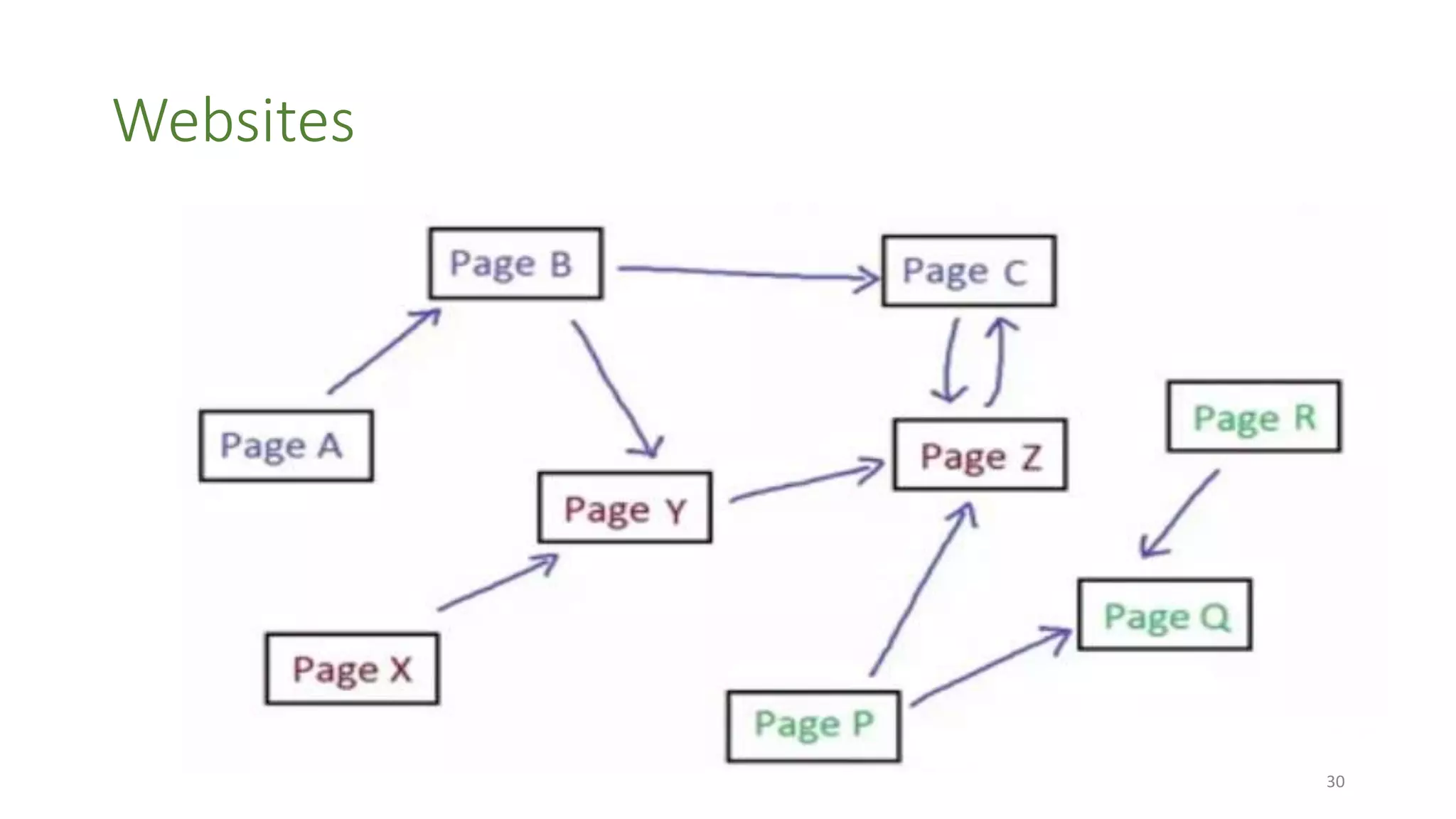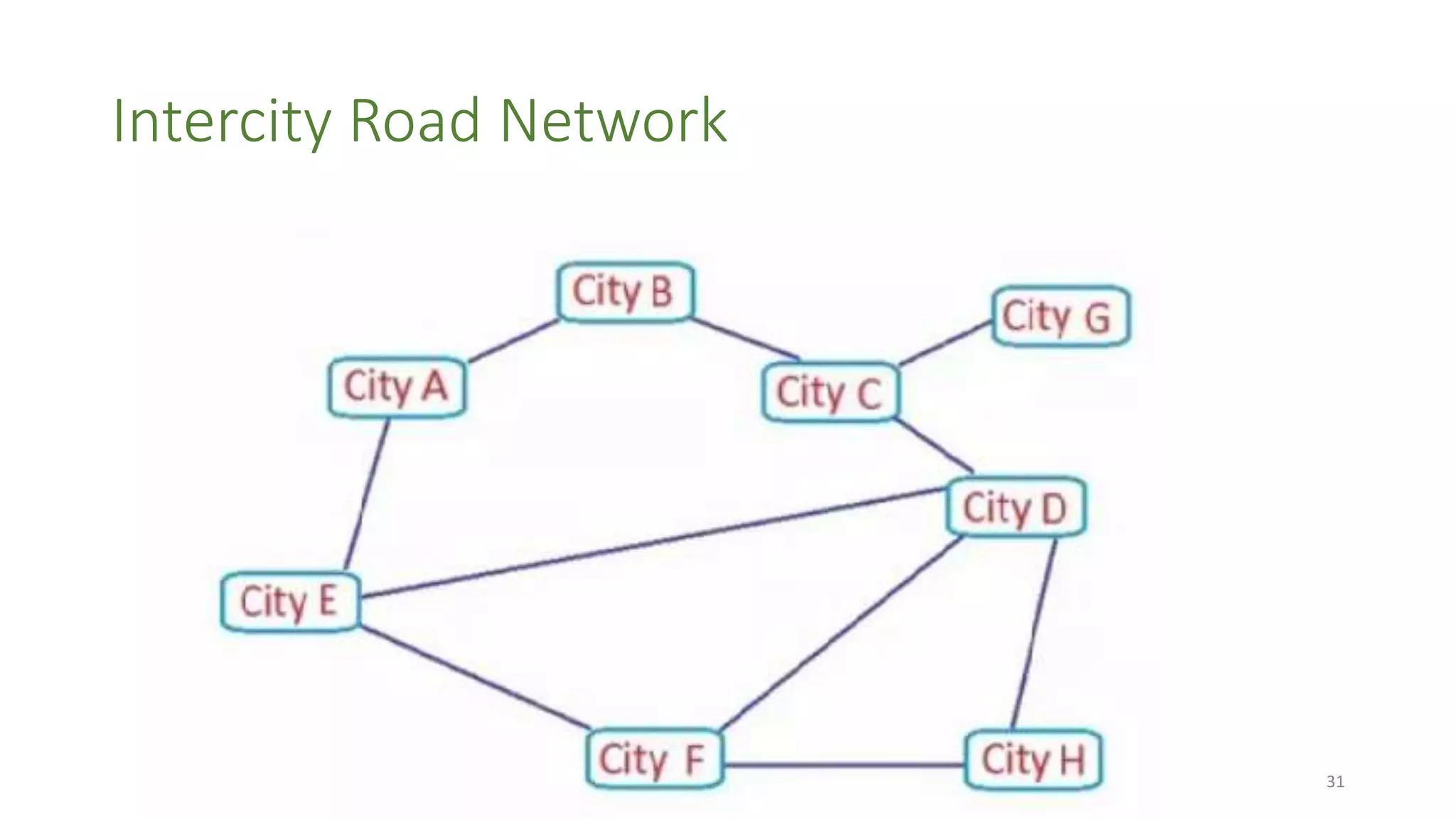Graphs are a data structure composed of nodes connected by edges. There are two main types: directed graphs where edges show a flow between nodes, and undirected graphs where edges simply show a relationship between nodes. Key terminology includes adjacent nodes, paths, cyclic vs acyclic paths, and representations like adjacency matrices and lists. Graphs can model many real-world applications such as social networks, computer networks, road maps, and more.
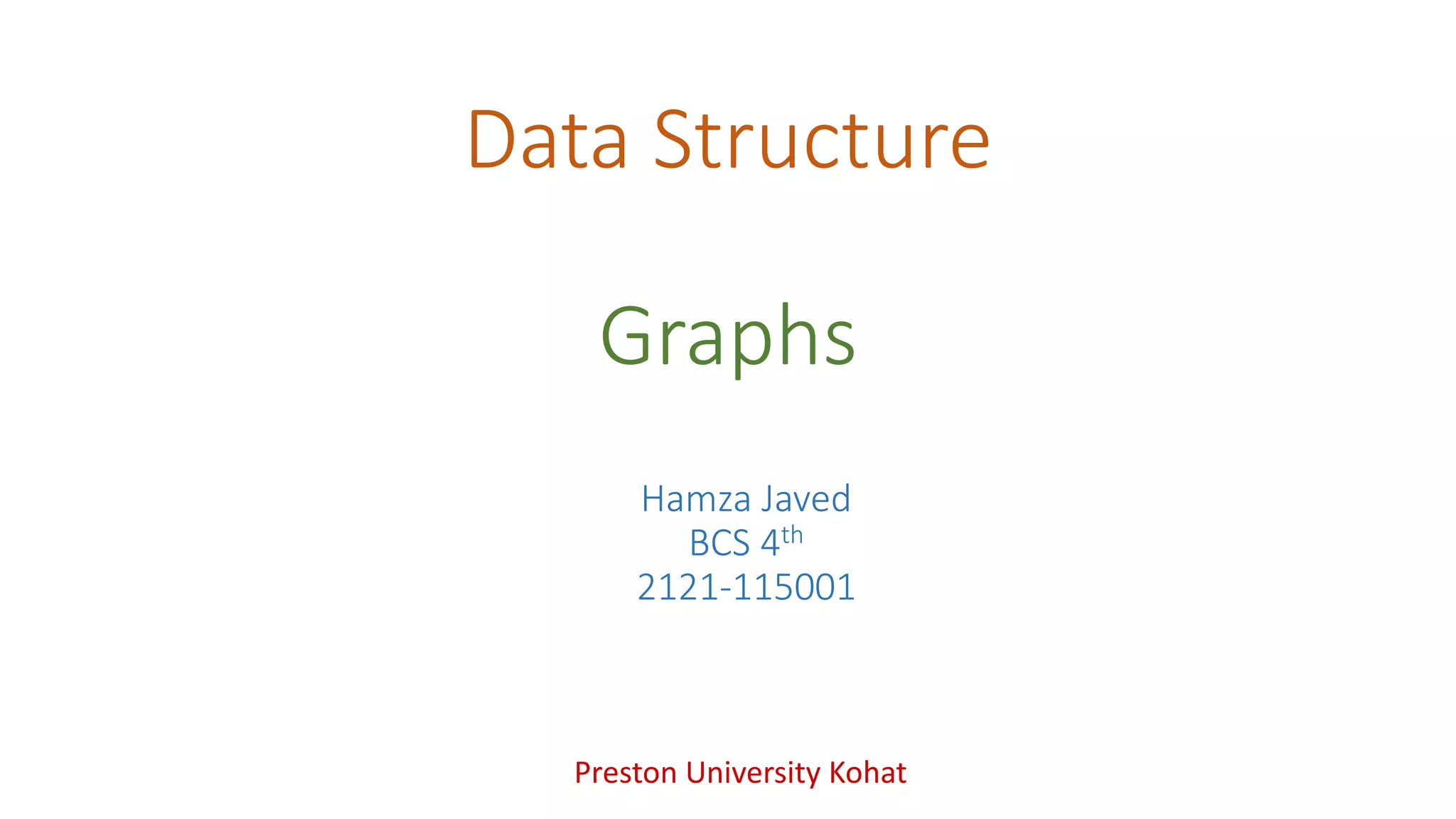

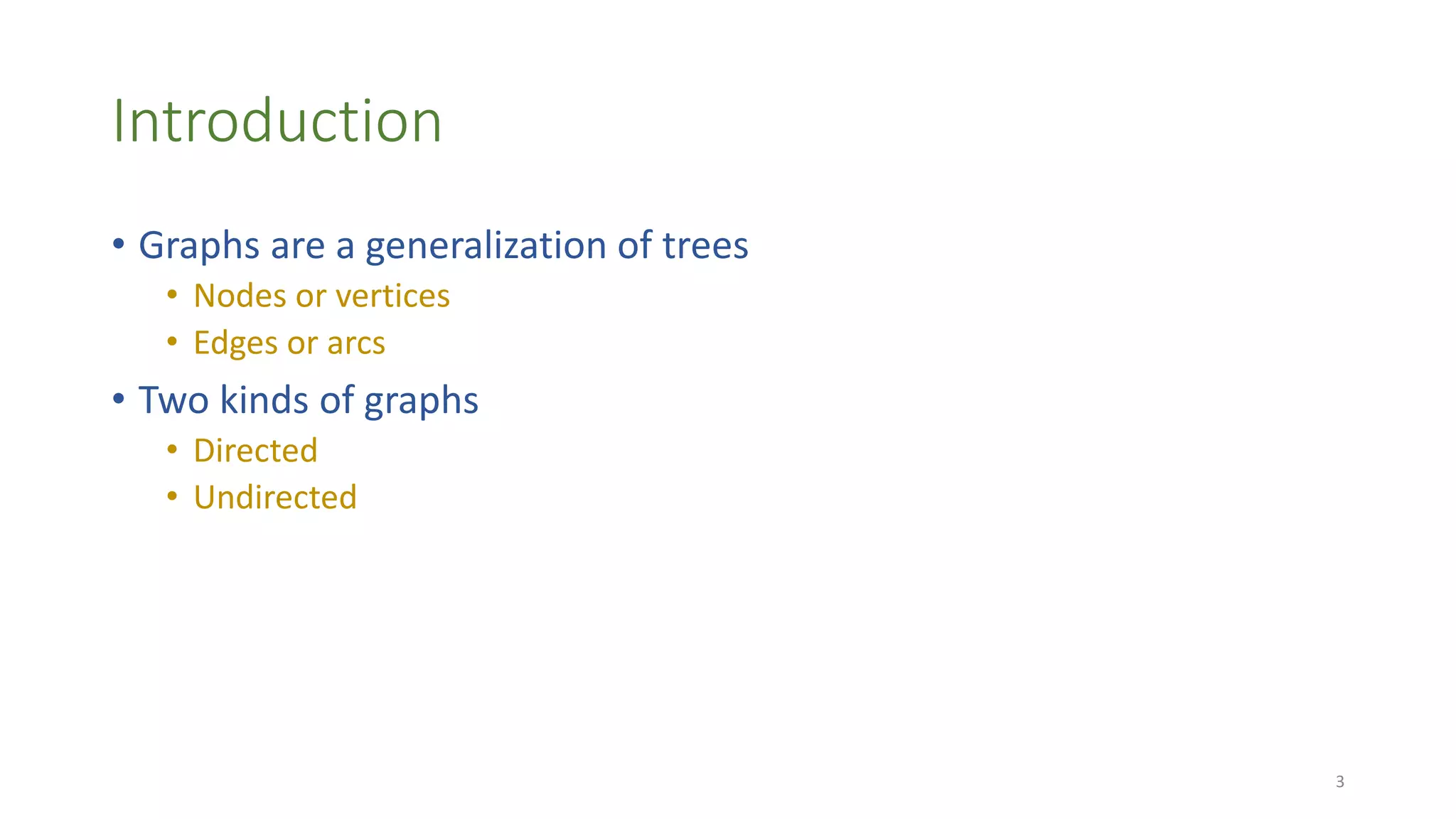
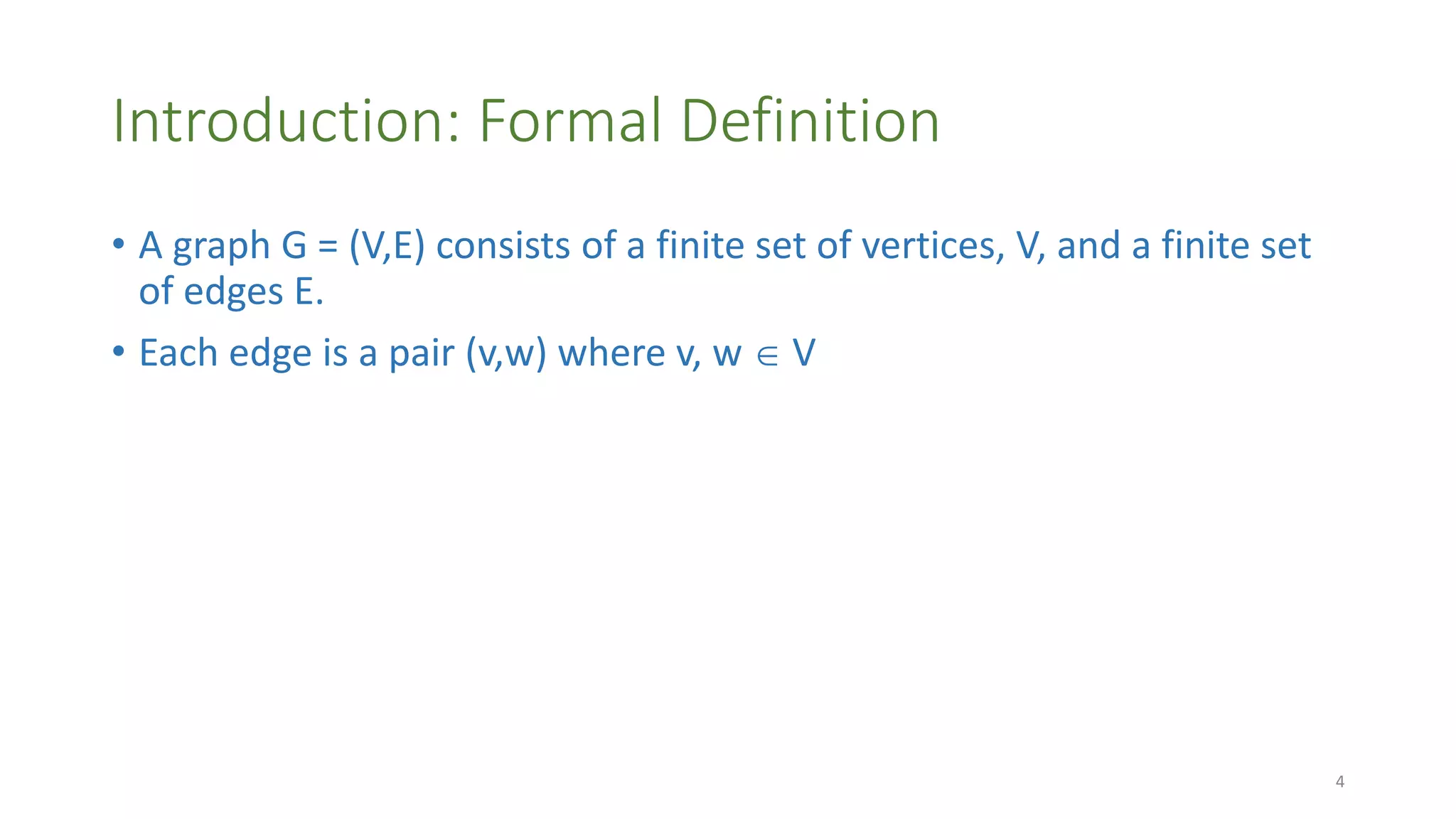
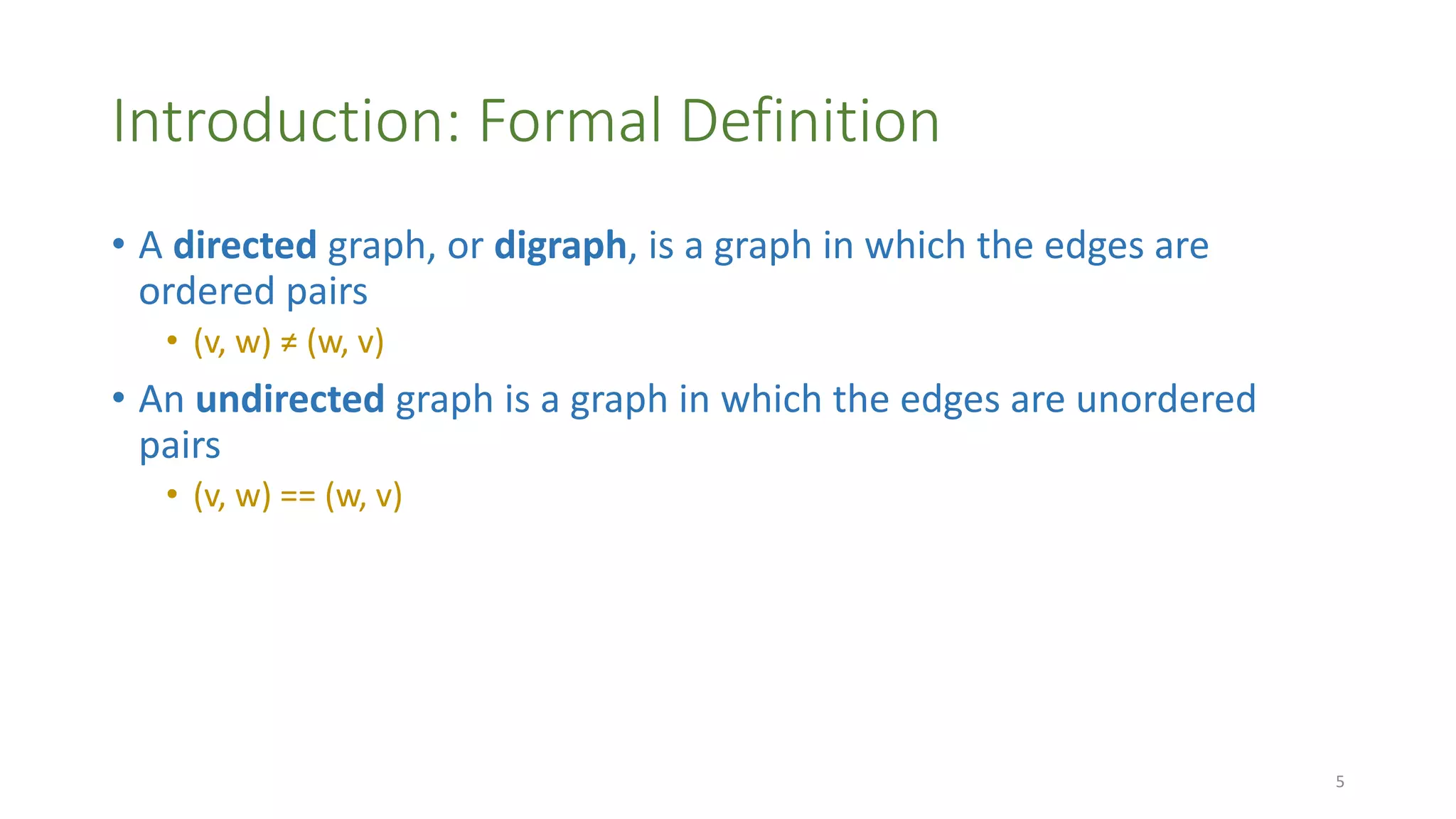
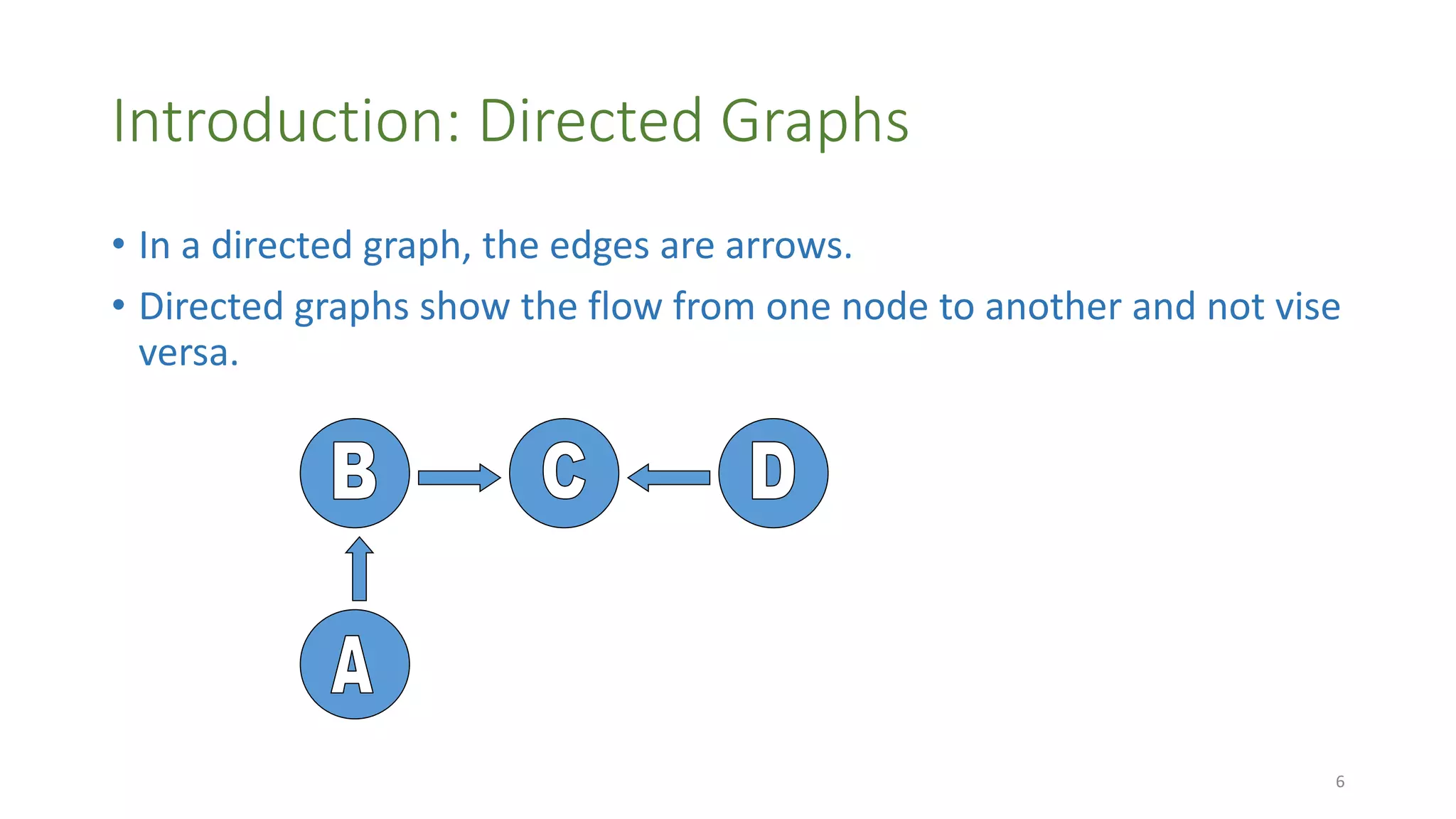
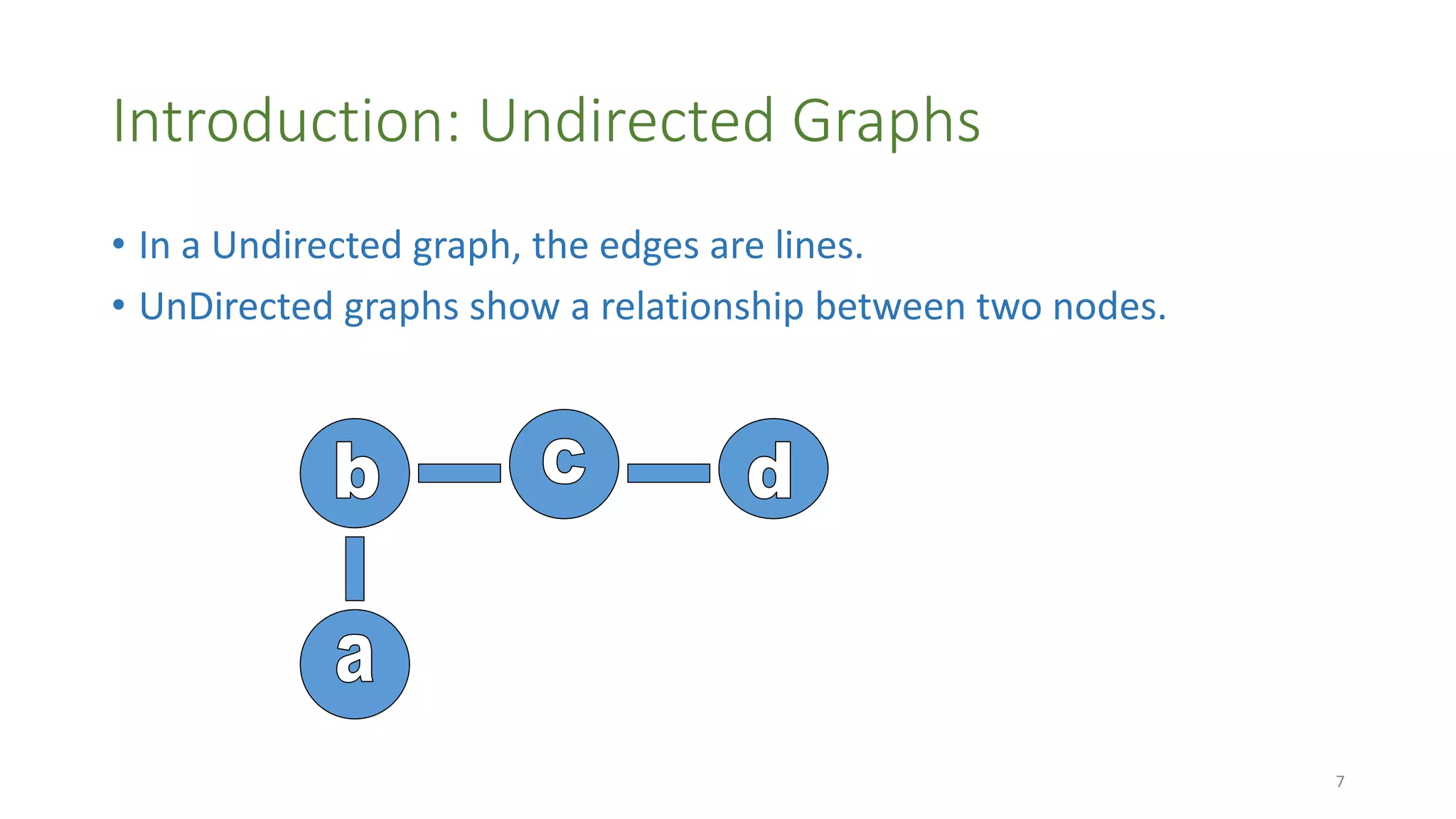
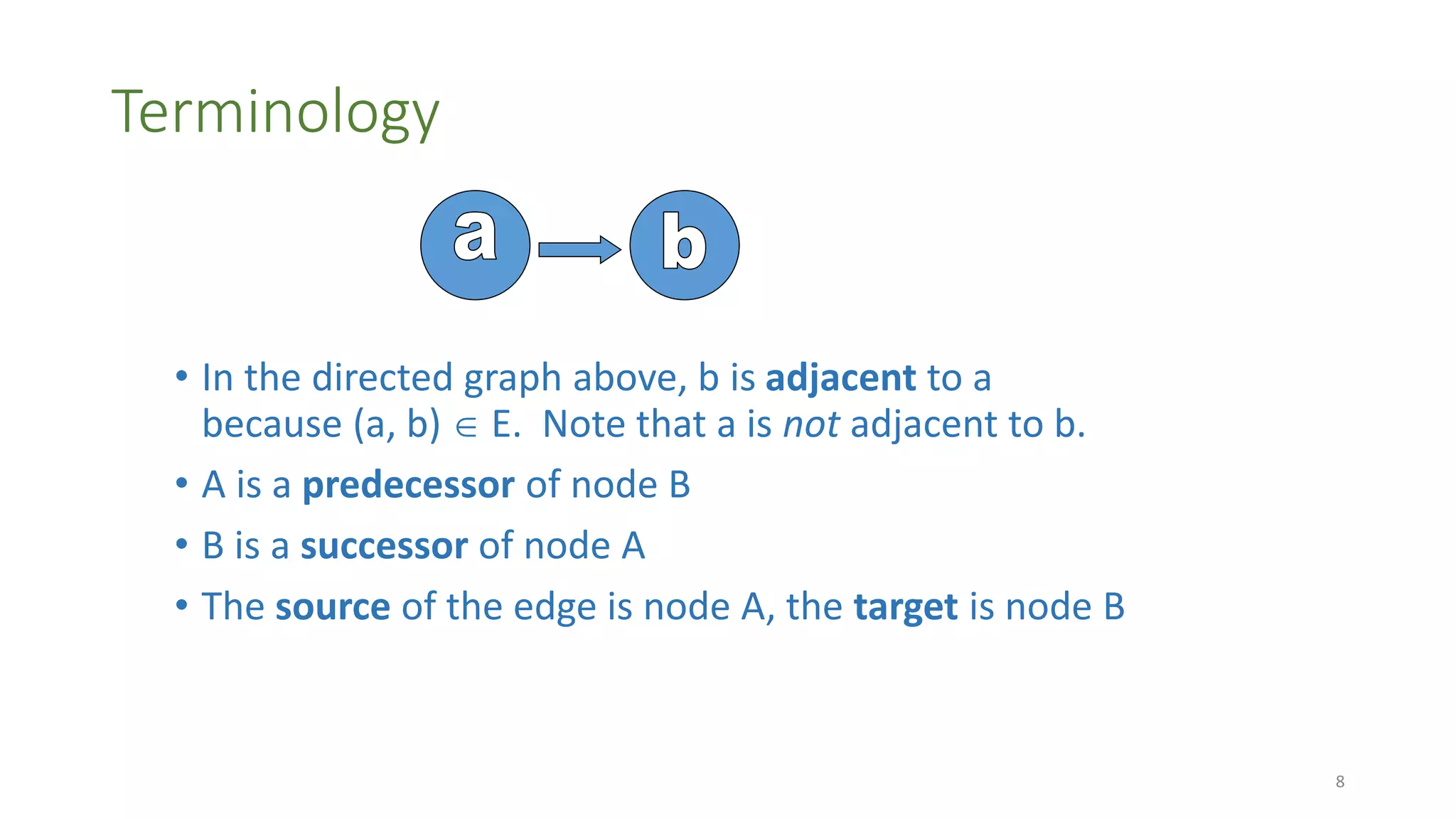
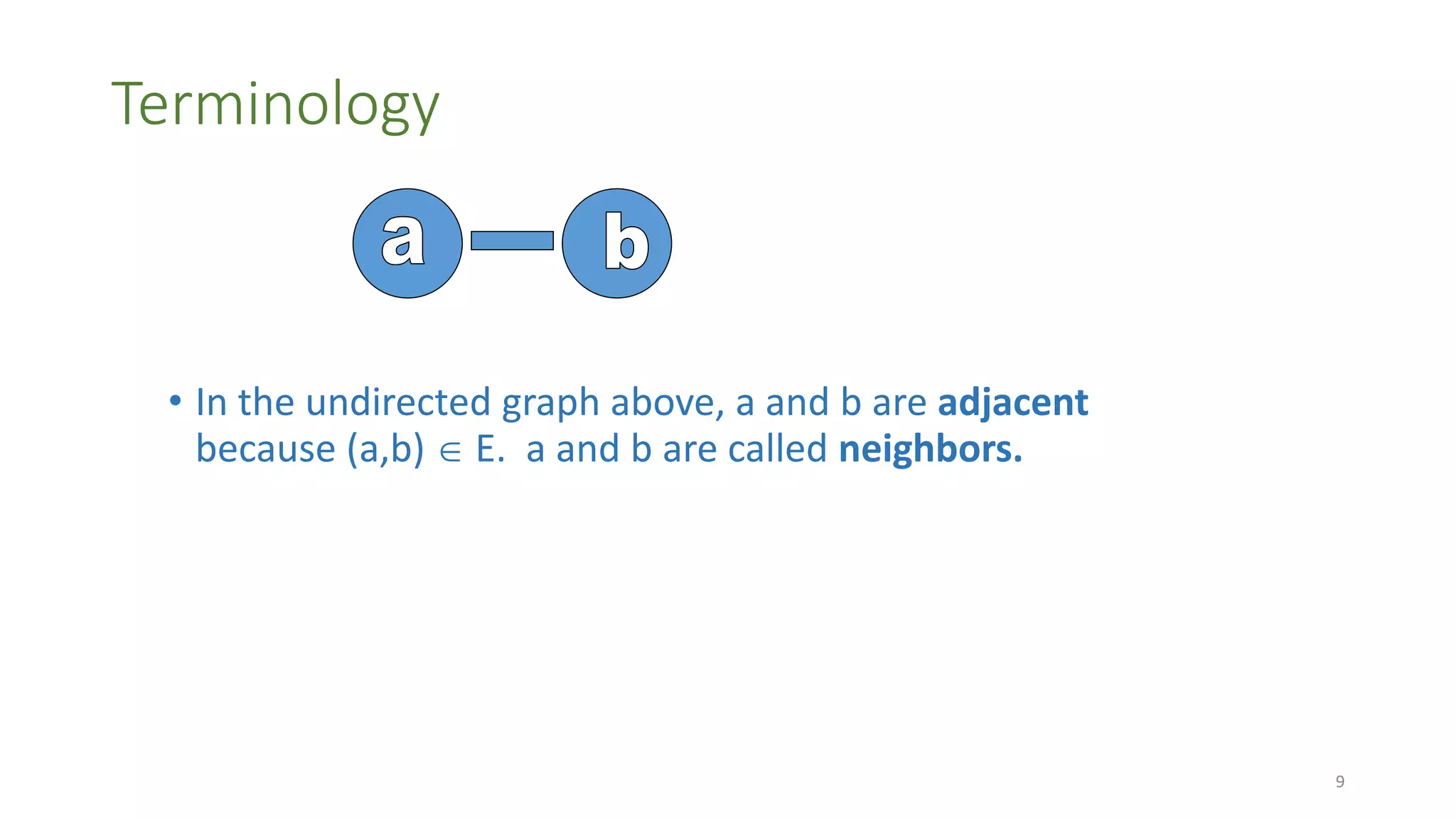
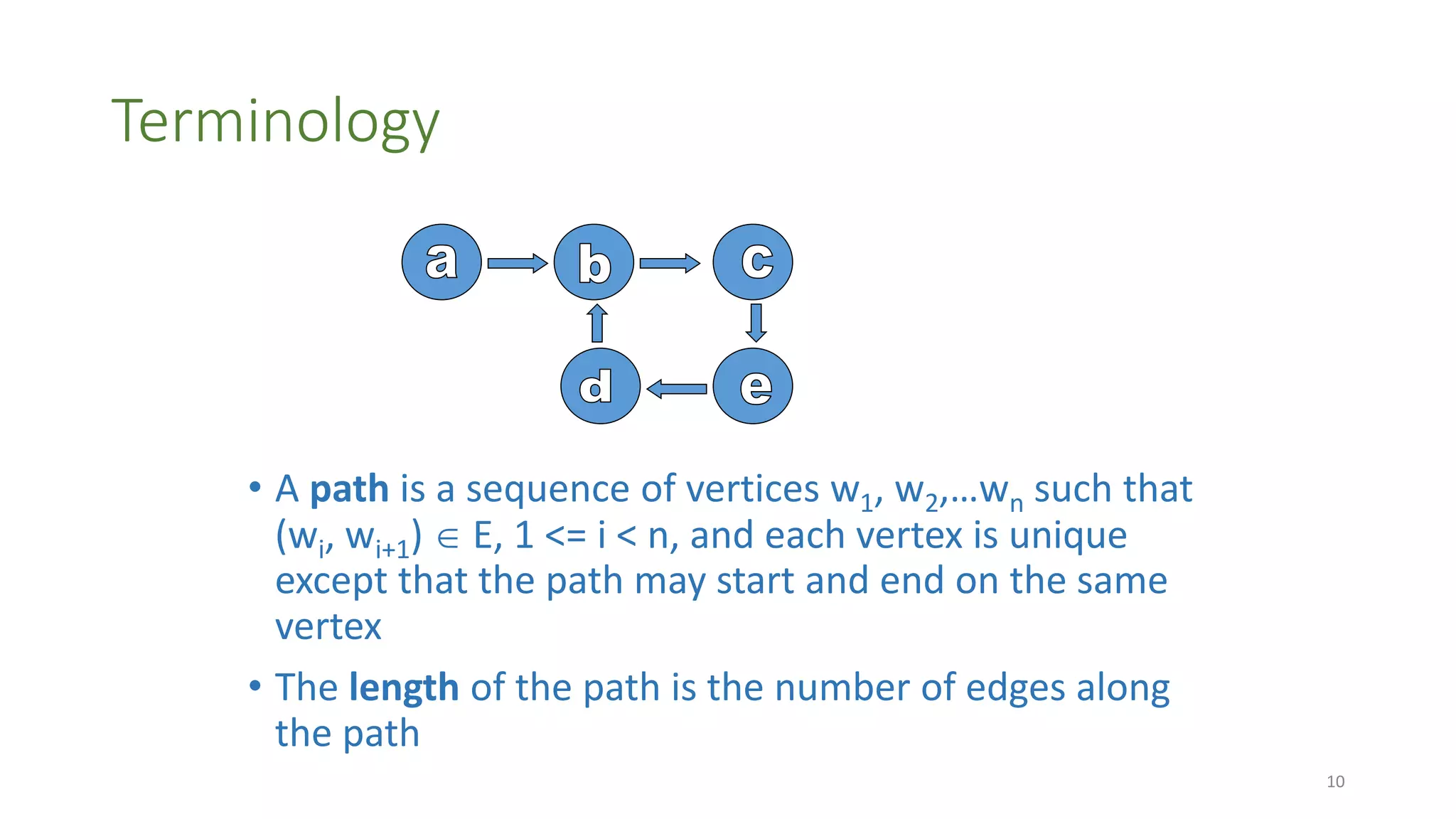
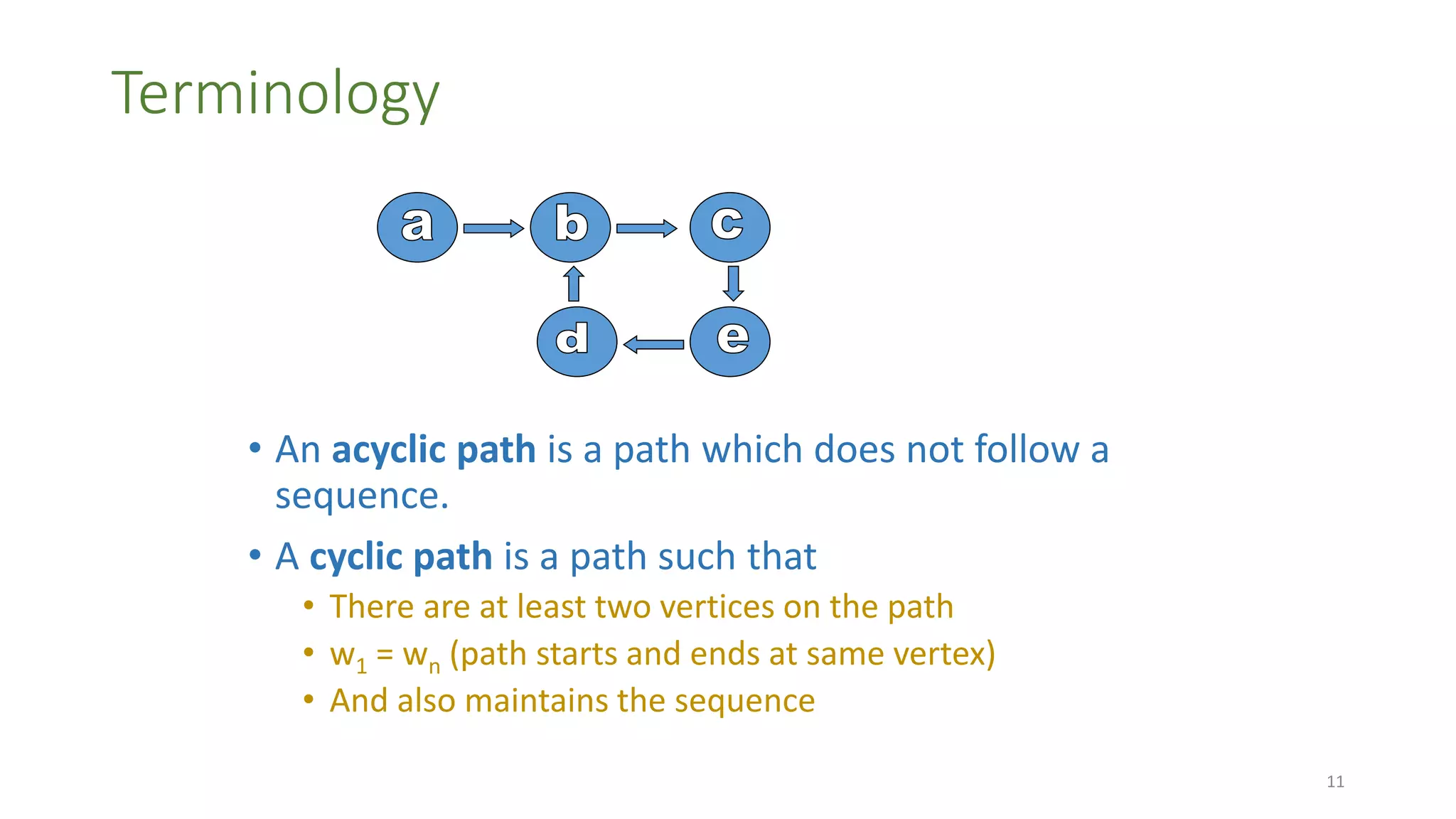
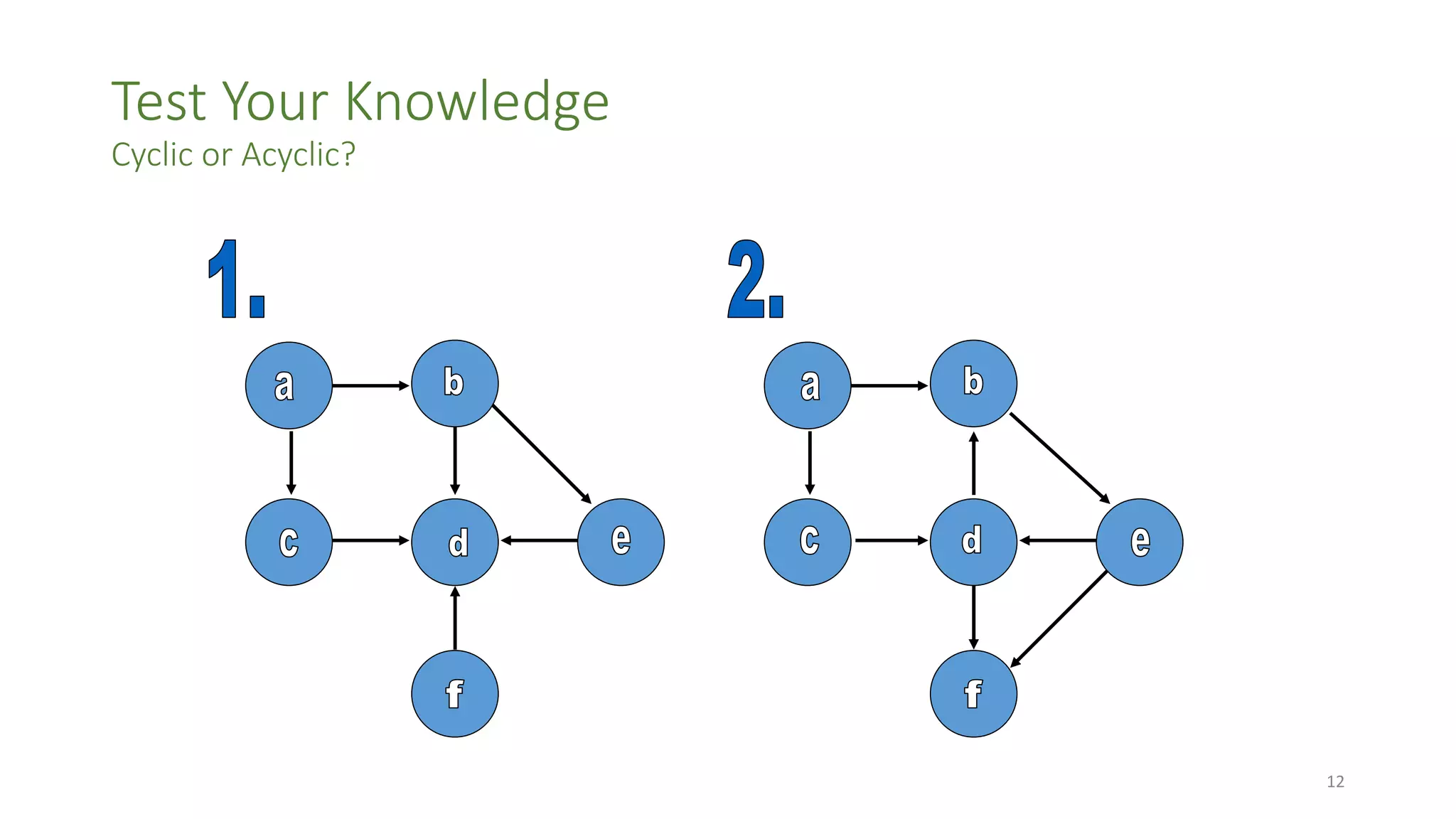
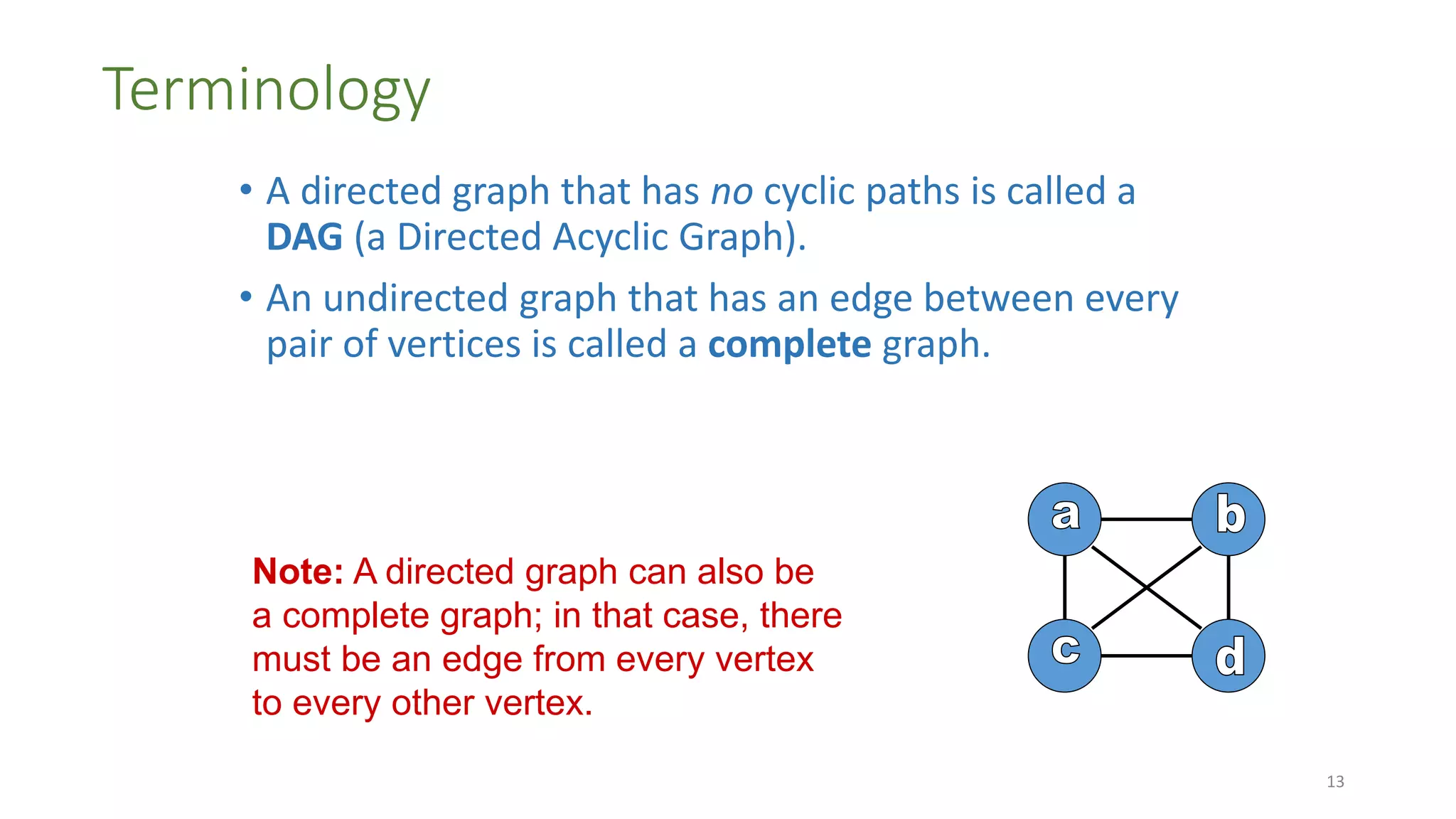
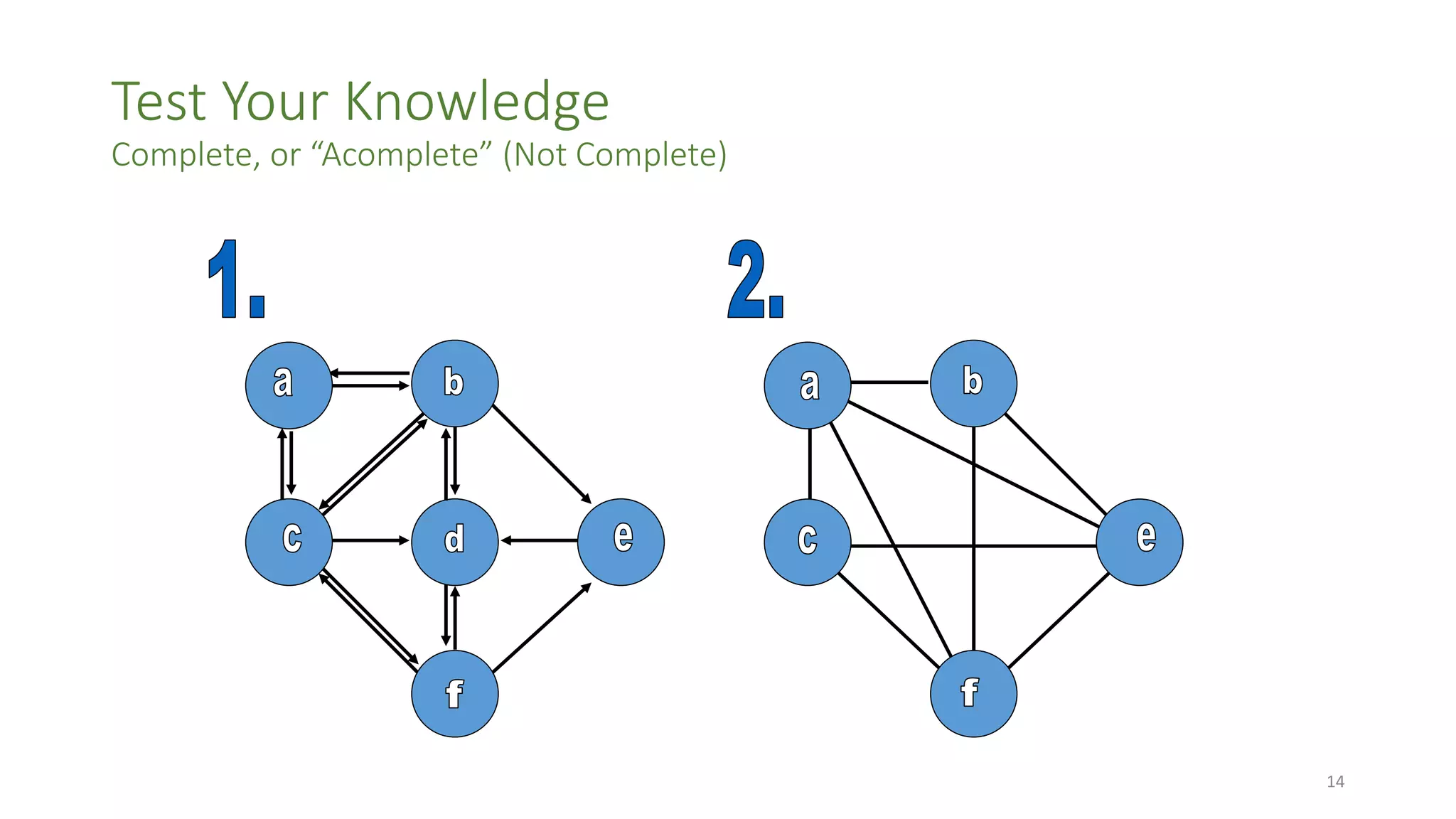
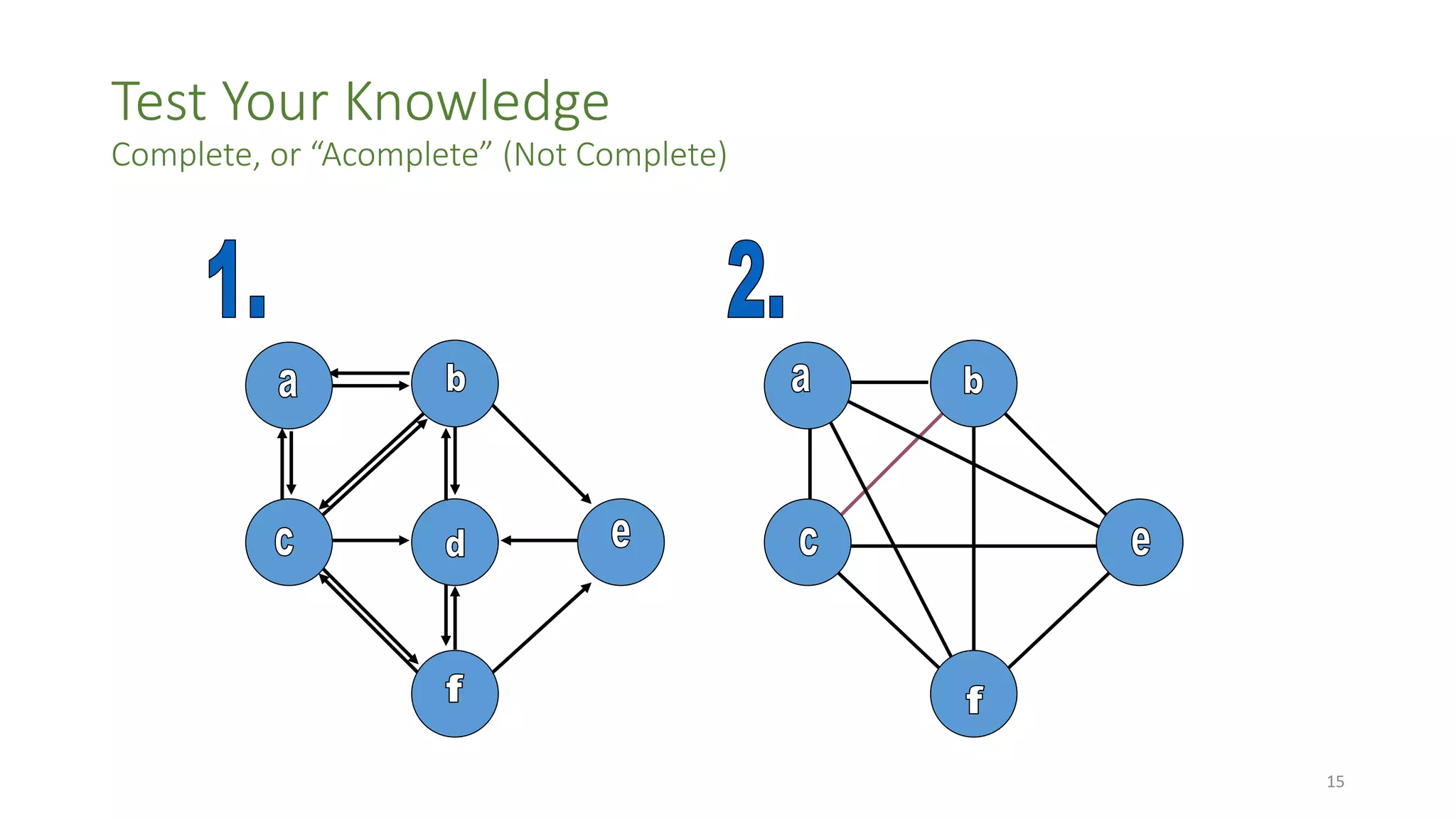
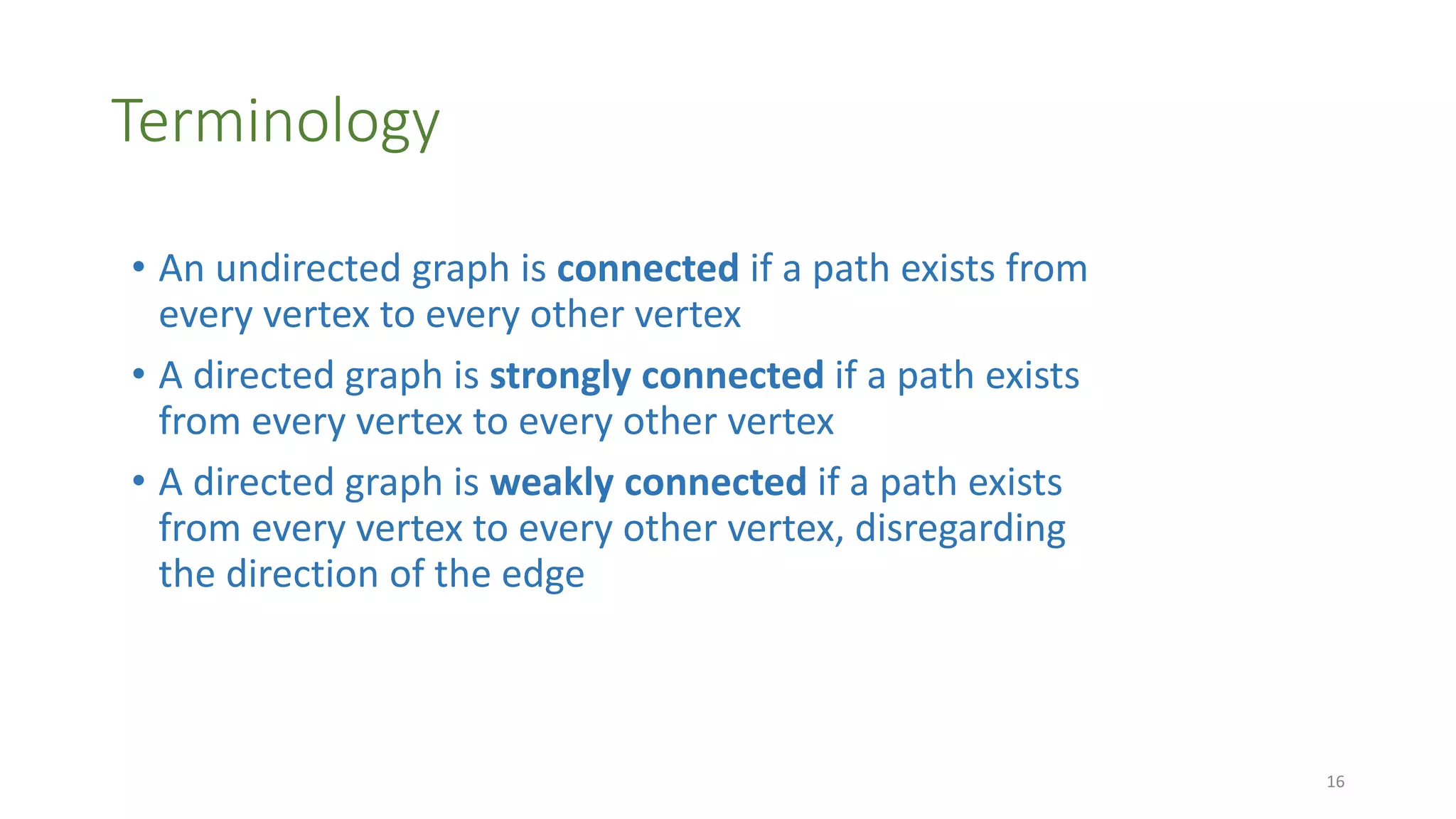
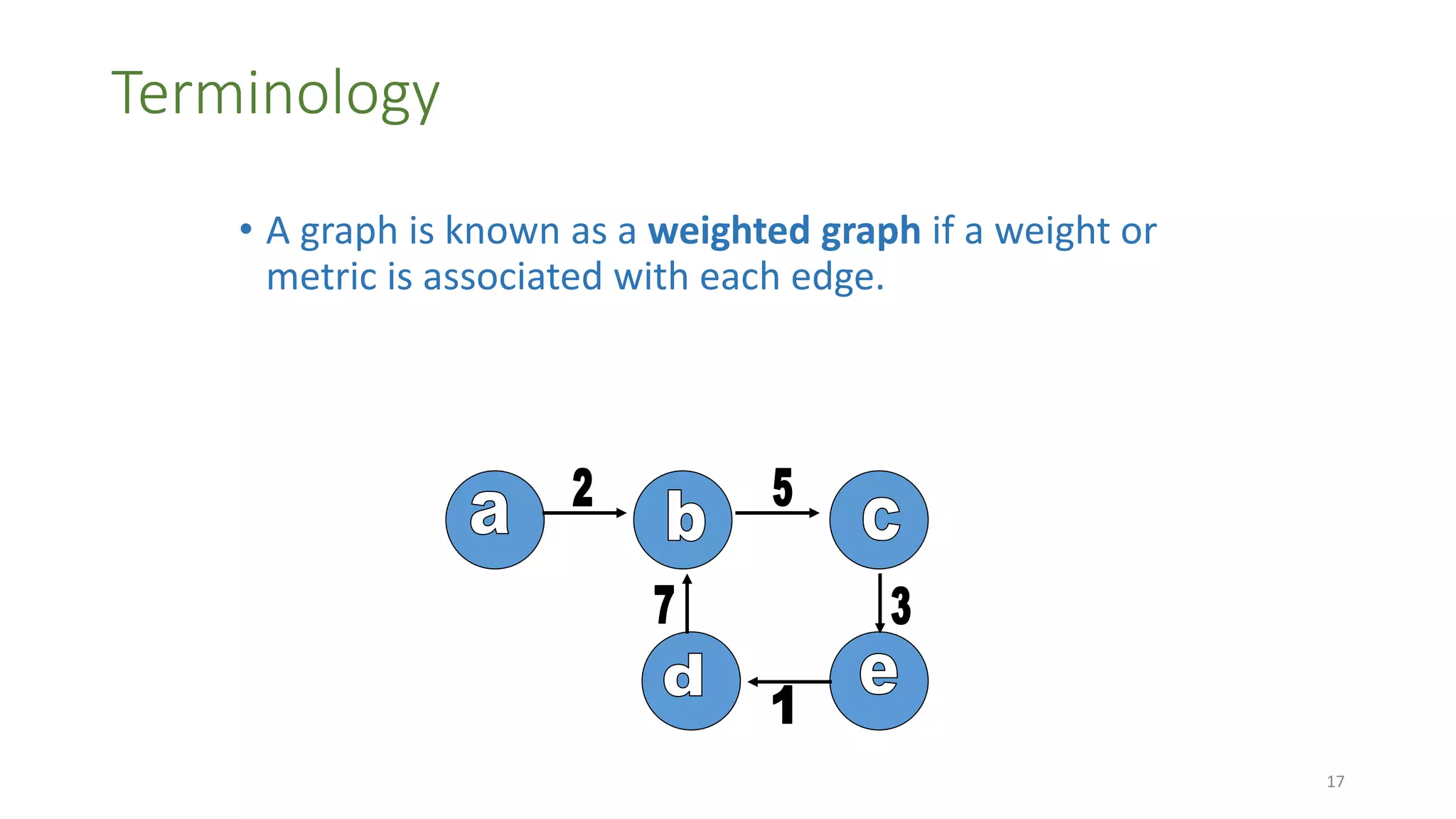
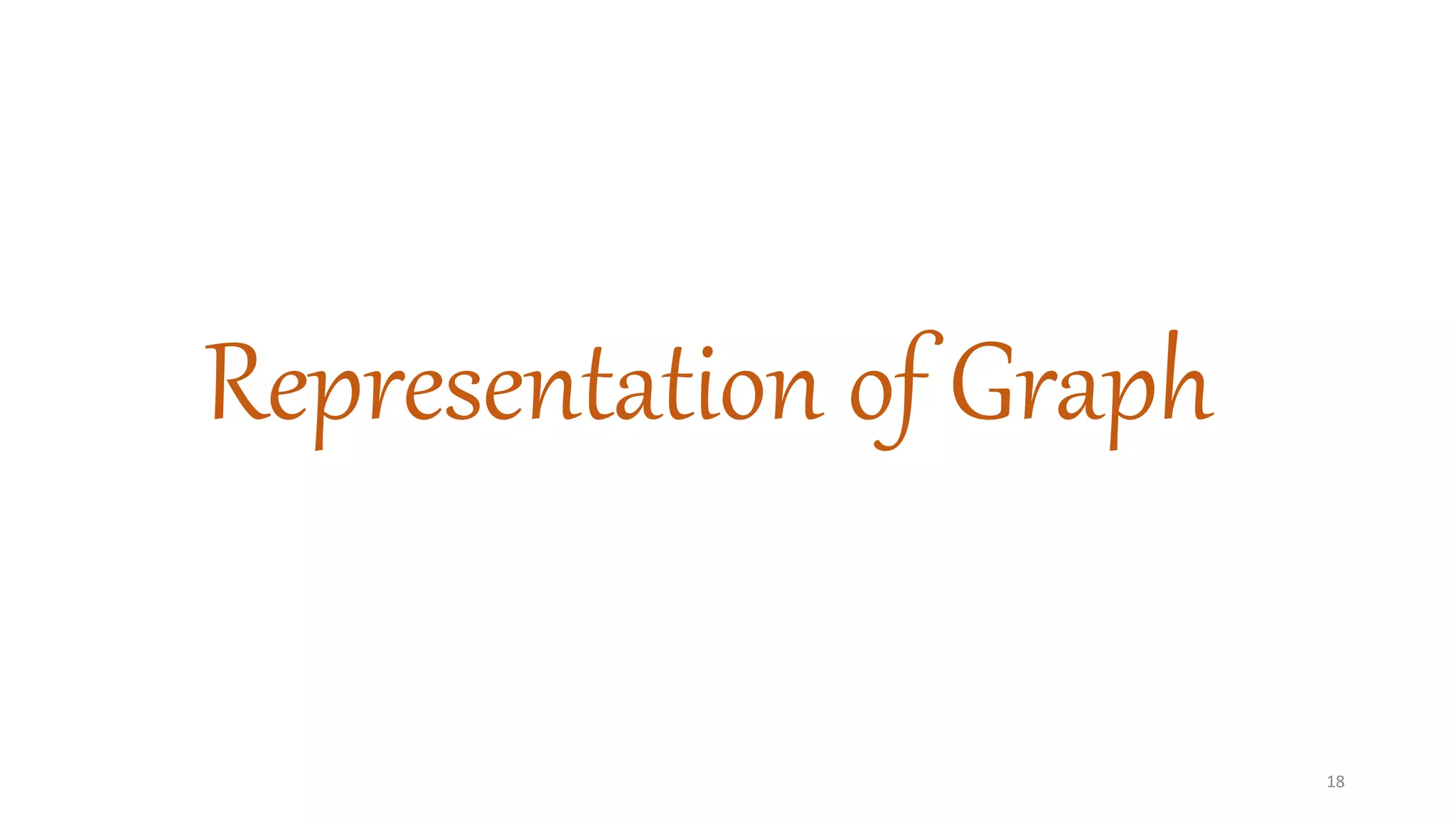
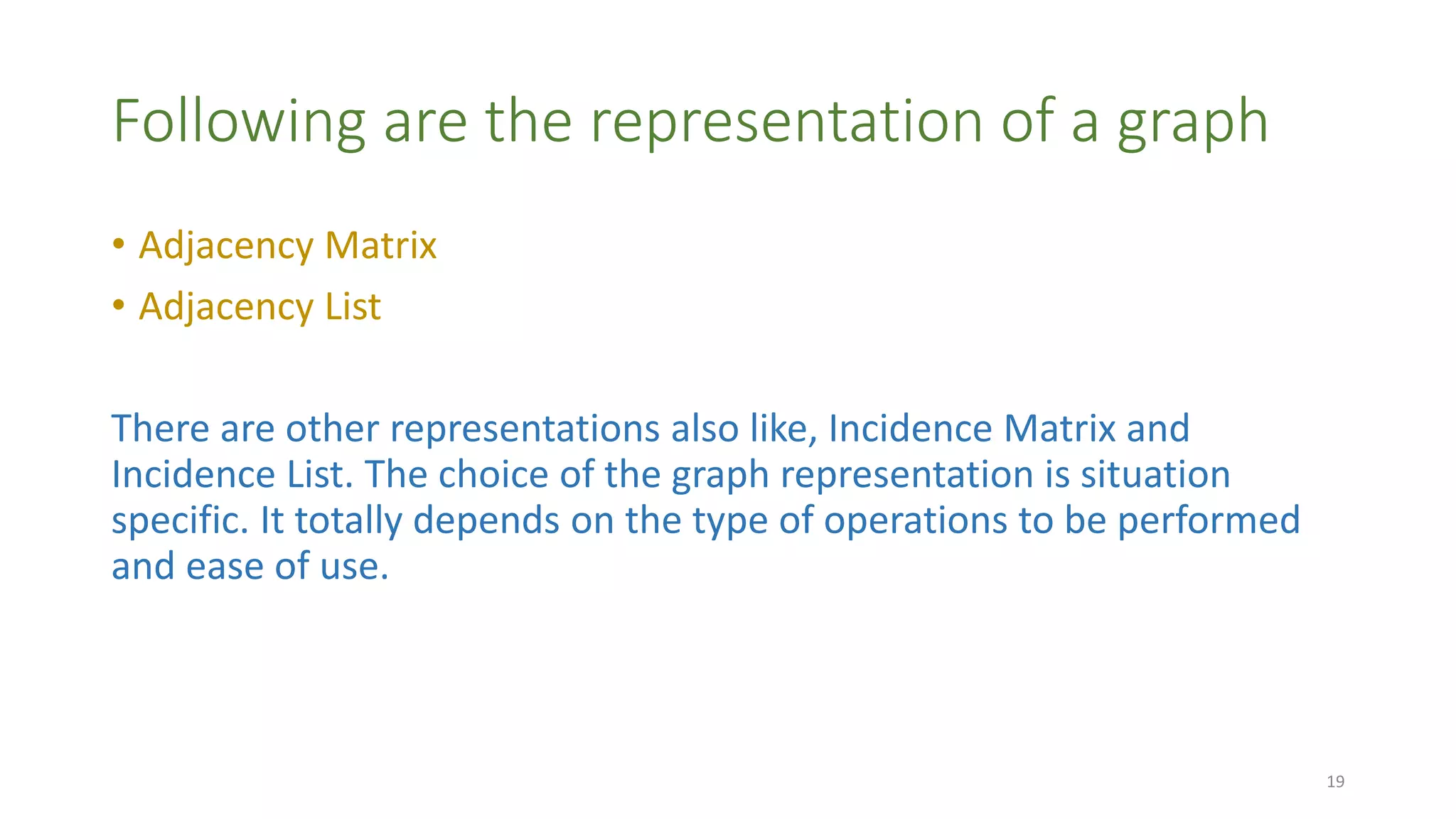
![Adjacency Matrix
• Adjacency Matrix is a 2D array of size V x V where V is the number of
vertices in a graph. Let the 2D array be adj[][], a slot adj[i][j] = 1
indicates that there is an edge from vertex i to vertex j. Adjacency
matrix for undirected graph is always symmetric. Adjacency Matrix is
also used to represent weighted graphs. If adj[i][j] = w, then there is
an edge from vertex i to vertex j with weight w.
20](https://image.slidesharecdn.com/graphsindatastructure-160519095940/75/Graphs-in-data-structure-20-2048.jpg)
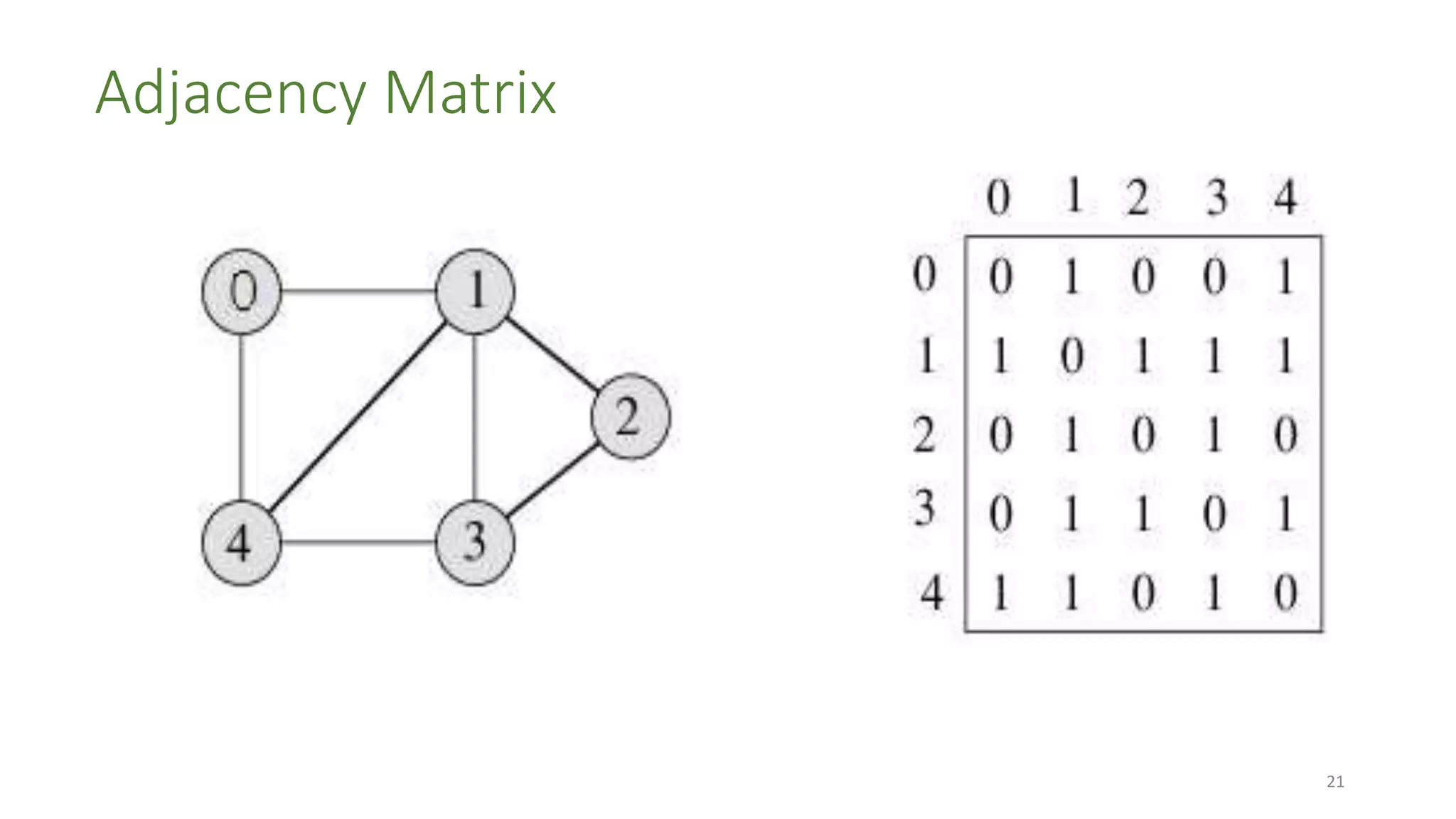
![Adjacency List
• An array of linked lists is used. Size of the array is equal to number of
vertices. Let the array be array[]. An entry array[i] represents the
linked list of vertices adjacent to the ith vertex. This representation
can also be used to represent a weighted graph. The weights of edges
can be stored in nodes of linked lists. Following is adjacency list
representation of the above graph.
22](https://image.slidesharecdn.com/graphsindatastructure-160519095940/75/Graphs-in-data-structure-22-2048.jpg)
